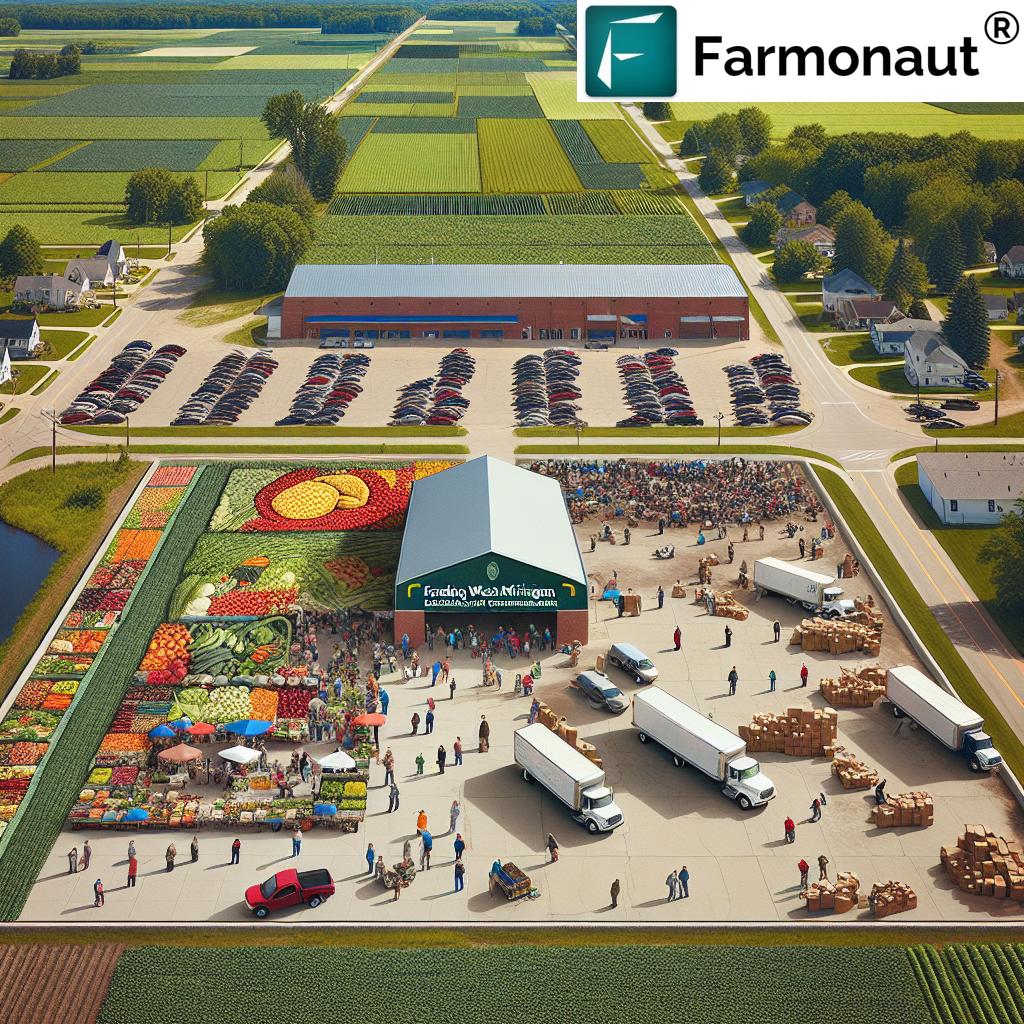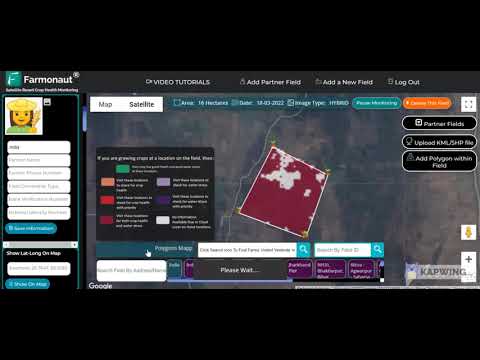USDA Cuts Impact Michigan Food Banks: Emergency Assistance Program Paused Amid Federal Review
“Michigan food banks face a crisis as USDA cuts affect 1.3 million residents relying on emergency food assistance programs.”
In recent months, we’ve witnessed a significant shift in the landscape of food assistance programs across Michigan. The United States Department of Agriculture (USDA) has implemented cuts that are sending shockwaves through our state’s food banks and the communities they serve. As we delve into this pressing issue, we’ll explore the multifaceted impact of these changes on Michigan’s food assistance programs, agriculture industry, and the innovative strategies being employed to combat rising food insecurity.
The Ripple Effect of USDA Program Pauses
The Emergency Food Assistance Program, a crucial lifeline for many Michigan residents, has been paused amid a federal review. This unexpected halt has left food banks across the state, particularly in West Michigan and the Upper Peninsula, scrambling to fill the gap. Feeding America West Michigan, a cornerstone organization in our state’s fight against hunger, has been hit hard by these changes.
Ken Estelle, President and CEO of Feeding America West Michigan, shared some sobering statistics:
- 32 truckloads of food, equivalent to 600,000 pounds, have been delayed or canceled
- The value of this food is estimated at $1.1 million
- These deliveries were scheduled to arrive between April and July
This sudden loss of resources comes at a critical time when demand for food assistance is already high. The strain on local food banks is palpable, and the need for community support has never been more urgent.

Understanding the Complexity of Agricultural Aid Programs
To fully grasp the situation, we need to understand the intricacies of agricultural aid programs and their connection to food assistance. The USDA’s Emergency Food Assistance Program is backed by the Commodity Credit Corporation, a federal fund that plays a crucial role in supporting American agriculture and food security.
The current pause in the program is part of a broader federal review, which has frozen funds for emergency food assistance. This review comes in the wake of sweeping cuts across various federal government programs, including other USDA food assistance initiatives.
For farmers and agricultural businesses in Michigan, these changes create uncertainty. The state’s $104 billion agriculture industry is closely tied to federal policies and programs. Any disruption in these systems can have far-reaching consequences for both producers and consumers.
The Impact on Michigan’s Food Banks and Distribution Centers
“West Michigan and Upper Peninsula food distributions see up to 40% reduction due to federal emergency food assistance pauses.”
Feeding America West Michigan, which serves about half of Michigan’s 83 counties, is at the forefront of this crisis. In 2024, the organization provided 26.7 million meals’ worth of food to those in need. However, the recent USDA cuts have created a significant hurdle in their operations.
The cancellation of 32 food trucks is unprecedented. Typically, food banks might see one or two trucks’ worth of food returned by the USDA’s Agricultural Marketing Service, but never on this scale. This sudden reduction in resources is forcing food banks to reevaluate their distribution strategies and seek alternative sources of support.
Innovative Strategies to Bridge the Gap
In the face of these challenges, food banks and community organizations are developing creative solutions to ensure that vulnerable populations continue to receive the support they need. Some of these strategies include:
- Partnerships with Local Farms: By collaborating directly with Michigan farmers, food banks can secure fresh produce and reduce transportation costs.
- Increased Reliance on Donors: Community members and businesses are being called upon to step up their contributions to fill the void left by federal cuts.
- Efficiency Improvements: Food banks are optimizing their operations to stretch resources further and reduce waste.
- Technology Integration: Utilizing advanced systems for inventory management and distribution planning to maximize impact.
One such technological solution that’s making waves in the agricultural sector is Farmonaut. This innovative platform offers satellite-based farm management solutions that can help optimize crop yields and resource allocation. While not directly involved in food bank operations, tools like Farmonaut can play a crucial role in improving overall agricultural efficiency, potentially leading to more abundant harvests and increased food availability.
The Role of Michigan’s Agriculture Industry in Addressing Food Insecurity
Michigan’s robust agriculture sector is a key player in the fight against hunger. As federal support wavers, local farmers and agribusinesses are stepping up to fill the gap. Here’s how the industry is adapting:
- Direct donations to food banks and pantries
- Participation in gleaning programs to salvage unused crops
- Collaboration with food banks for strategic crop planning
- Support for community gardens and urban farming initiatives
These efforts not only help address immediate food needs but also strengthen the local food system, making it more resilient to future shocks.
Community Efforts and Volunteer Mobilization
The pause in federal emergency food assistance has galvanized community action across Michigan. We’re seeing an outpouring of support from various sectors:
- Volunteer Surge: Food banks are experiencing an increase in volunteer sign-ups as community members seek to help.
- Corporate Partnerships: Local businesses are organizing food drives and matching employee donations.
- Faith-Based Initiatives: Religious organizations are mobilizing their congregations to support food distribution efforts.
- Educational Institutions: Schools and universities are integrating food drives and nutrition education into their programs.
This collective effort demonstrates the resilience and compassion of Michigan’s communities in the face of adversity.
The Long-Term Outlook for Michigan’s Food Assistance Programs
As we navigate these challenging times, it’s crucial to consider the long-term implications of the current situation. The pause in the Emergency Food Assistance Program raises questions about the sustainability of our food security systems and the need for more robust, locally-driven solutions.
Here’s a comparative look at the impact of USDA cuts on Michigan food banks:
| Aspect | Before USDA Cuts | After USDA Cuts | Mitigation Strategies |
|---|---|---|---|
| Monthly Food Distribution (estimated tons) | 1,000 | 700 | Increased local sourcing, community drives |
| Number of Families Served | 50,000 | 35,000 | Prioritization of high-need cases, resource optimization |
| Federal Funding (estimated $) | $5 million | $3 million | Seeking alternative funding sources, grants |
| Local Farm Partnerships | 20 | 35 | Expanded outreach to local producers |
| Volunteer Hours Required | 10,000 | 15,000 | Enhanced volunteer recruitment and training programs |
This table illustrates the significant changes food banks are facing and the creative strategies they’re employing to maintain their vital services.
Leveraging Technology for Agricultural Efficiency
In times of crisis, innovation often emerges as a crucial factor in overcoming challenges. The agricultural technology sector, including companies like Farmonaut, is playing an increasingly important role in optimizing farm productivity and resource management. While not directly involved in food bank operations, these technologies can contribute to overall food security by improving crop yields and reducing waste.
Farmonaut’s satellite-based crop health monitoring and AI-driven advisory systems offer farmers powerful tools to maximize their output. By providing real-time insights into crop health, soil moisture levels, and weather patterns, these technologies enable more efficient use of resources and can potentially lead to increased food production.
For those interested in exploring these cutting-edge agricultural solutions, Farmonaut offers various access points:
- API Access: For developers looking to integrate satellite and weather data into their own systems.
- API Developer Docs: Comprehensive documentation for implementing Farmonaut’s technology.
- iOS App: For Apple device users to access Farmonaut’s features on the go.
The Future of Food Assistance in Michigan
As we look to the future, it’s clear that the landscape of food assistance in Michigan is evolving. The current challenges have highlighted the need for:
- Diversified Funding Sources: Reducing reliance on a single federal program.
- Strengthened Local Food Systems: Fostering closer ties between food banks and local producers.
- Increased Use of Technology: Implementing advanced systems for inventory management and distribution.
- Policy Advocacy: Working towards more stable and sustainable food assistance policies.
These changes, while challenging to implement, have the potential to create a more resilient and responsive food assistance network in Michigan.
How You Can Help
In these difficult times, community support is more crucial than ever. Here are ways you can contribute to alleviating food insecurity in Michigan:
- Donate: Financial contributions to food banks allow for flexible and efficient resource allocation.
- Volunteer: Offer your time and skills to local food distribution centers.
- Advocate: Contact your representatives to voice support for robust food assistance programs.
- Spread Awareness: Share information about local food assistance resources with those who might need help.
Every action, no matter how small, can make a significant difference in the lives of those facing food insecurity.

Conclusion: A Call for Collective Action
The pause in USDA’s Emergency Food Assistance Program has created significant challenges for Michigan’s food banks and the communities they serve. However, it has also sparked innovation, collaboration, and a renewed sense of community spirit. As we navigate these uncertain times, it’s clear that addressing food insecurity requires a multifaceted approach involving government, non-profits, businesses, and individual citizens.
By leveraging technology, strengthening local partnerships, and maintaining a commitment to those in need, we can work towards a future where every Michigan resident has access to nutritious food. The current crisis, while daunting, presents an opportunity to build a more resilient and equitable food assistance system for the future.
FAQ Section
- Q: How long is the USDA’s Emergency Food Assistance Program expected to be paused?
A: The duration of the pause is currently uncertain as it’s under federal review. Food banks are preparing for an extended period of reduced assistance. - Q: Are there any alternative federal programs available to fill the gap?
A: While there are other federal nutrition programs, none are currently able to fully replace the Emergency Food Assistance Program’s scope and impact. - Q: How can farmers contribute to alleviating the food bank crisis?
A: Farmers can donate excess produce, participate in gleaning programs, and collaborate with food banks for strategic crop planning. - Q: What impact does this have on Michigan’s agriculture industry?
A: The cuts create uncertainty in the market and may affect demand for certain crops typically purchased through federal programs. - Q: How can technology help in addressing food insecurity?
A: Technologies like Farmonaut’s satellite-based crop monitoring can help improve agricultural efficiency, potentially leading to increased food production and better resource management.
Earn With Farmonaut: Affiliate Program
Earn 20% recurring commission with Farmonaut’s affiliate program by sharing your promo code and helping farmers save 10%. Onboard 10 Elite farmers monthly to earn a minimum of $148,000 annually—start now and grow your income!
Farmonaut Subscriptions






